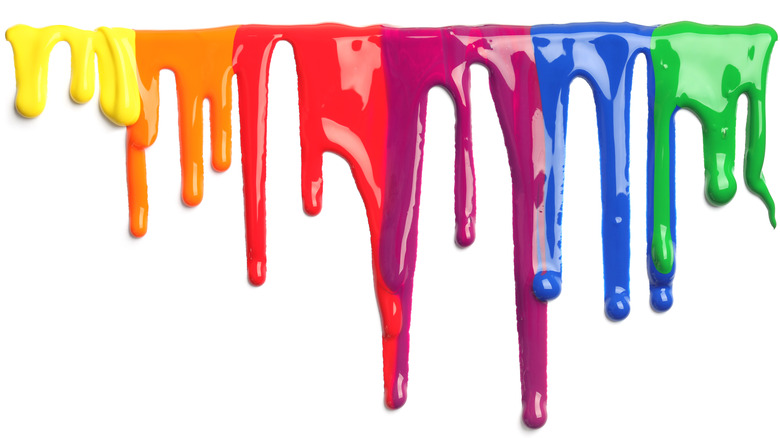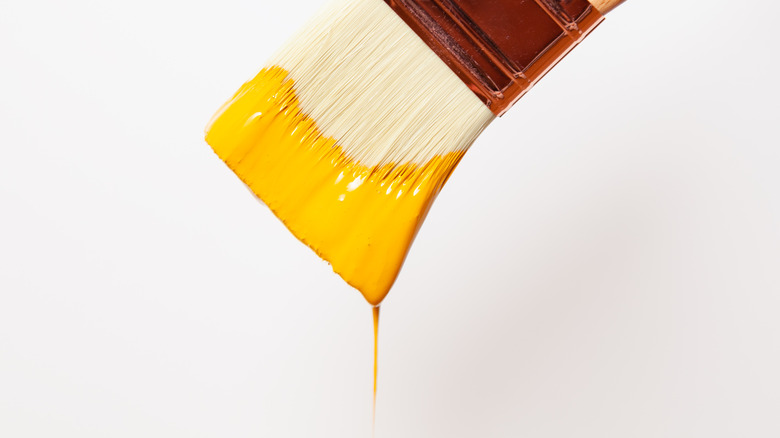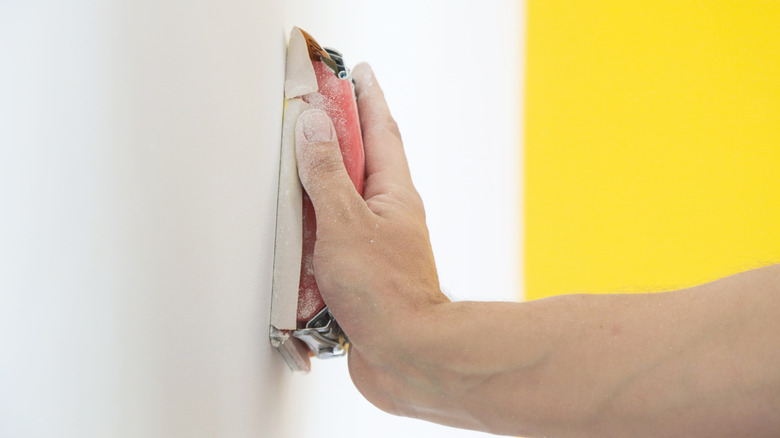How To Easily Fix Paint Drips
Once you've completed a painting project, one of the things that can spoil the finished outcome is dried-up paint drips. This is especially annoying if you're unsure how to remove them. According to Salvaged Inspirations, paint drips can happen if you apply too much paint to your brush or roller. Paint drips can also happen when using a spray gun on the wrong setting, as too much paint is dispersed at once. If too much paint is applied to any type of surface, unfortunately, gravity will always pull it down.
However, there are certain ways to prevent paint drips from happening, as well as some effective methods to get rid of them. You don't have to be a professional, and only a handful of tools and steps are necessary to complete your repair. In this article, we'll show you how to prevent paint drips as well as how to get rid of them without further damaging your property.
Preventing paint drips
First things first, the best way of not dealing with paint drips is to prevent them from happening at all. If you're working with a brush or a roller, you must ensure you're not coating them with too much paint, suggests Jerry Enos Painting. If you noticed your brush or roller has too much paint, be sure to wipe it off before you start the application process. It's also a good idea to keep a damp cloth nearby to wipe away any drips before they start to dry.
If you're using a spray can, Stockpiling Moms says to be sure to purchase one of high quality because it will be thicker and less likely to drip. You should also spray from 6 to 8 inches away, as holding the canister too close will create puddles of paint on the surface. A continuous spray should also be avoided and substituted for small bursts to steer clear of the same issue. If you need several coats of paint, be sure to allow the paint to dry between each layer. If you don't, you're likely going to deal with those annoying dry paint drips later.
Paint drip removal
If the paint drops have already dried, there are a few supplies you'll need to correctly remove them, according to Salvaged Inspirations. After the paint has completely dried, you can use a sharp tool or a razor blade to gently scrape off any large blobs of paint. Do this slowly and keep the tool flushed with the surface to avoid damaging the material underneath. Once you have scraped the excess paint away, you'll be left with a rough surface that needs sanding down until it is smooth.
Salvaged Inspirations also advises not to skip the scraping process because just sanding down the drip can lead to sanding off the rest of the paint and primer as well. After the sanding process, you should have a fresh new surface to apply paint to. Use a thin paintbrush (with a small amount of paint) and layer on one to two coats.


